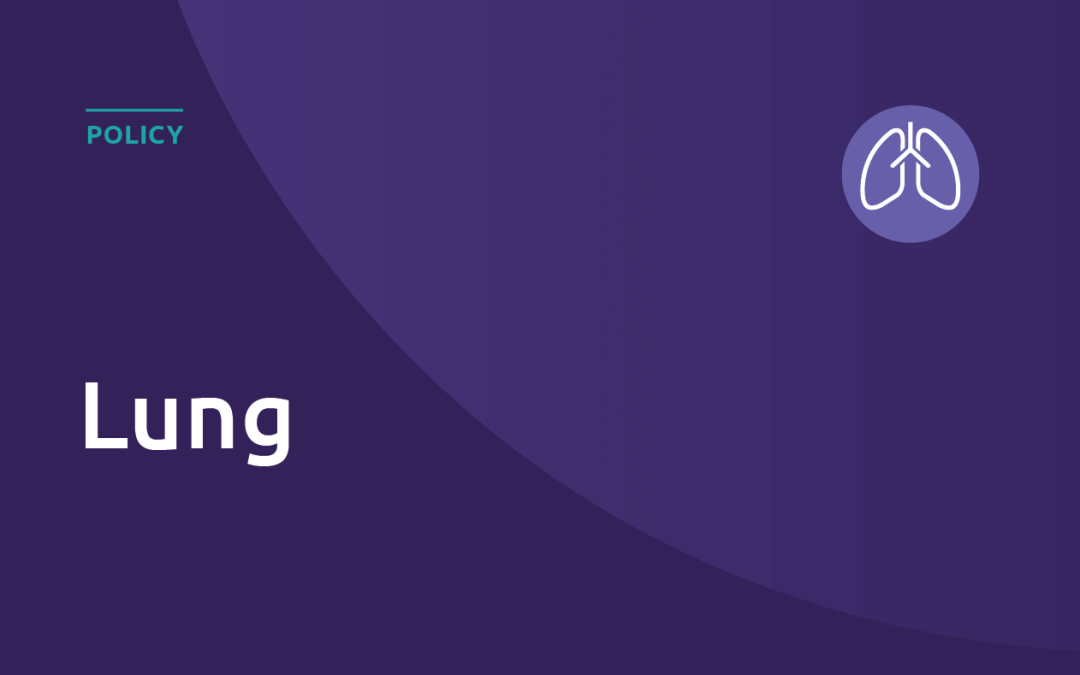Memo to: Lung transplant clinicians
From: OPTN Lung Transplantation Committee leadership
In response to frequently asked questions, the leadership of the OPTN Lung Transplant Committee provided the following information on submitting oxygen values for lung candidates.
Updated: Dec.13, 2023
All candidates requiring supplemental oxygen
If a candidate requires supplemental oxygen, the transplant program must enter the candidate’s supplemental oxygen needs at three activity levels: at rest, with sleep, and with exercise. Only values entered for supplemental oxygen needed “at rest” factor into the lung composite allocation score (CAS) per OPTN Policy 10.1.A.1 Waitlist Survival Points for Candidates at least 12 Years Old.
Candidates on high flow nasal cannula
Per OPTN Policy 10.3.A Lung Clinical Values That Must Be Updated Every 28 Days, transplant programs must report the amount of supplemental oxygen required to maintain adequate oxygen saturation (88% or greater) every 28 days for candidates on high flow nasal cannula. In OPTN Waiting List, transplant programs enter supplemental oxygen needs for candidates using high flow nasal cannula in terms of liters per minute (L/min) and as a percentage to indicate the fraction of inspired oxygen (FiO2). The computer system converts values entered as a percentage to L/min. The conversion is 3% per liter, per minute after subtracting 21% (to account for room air). For example, 60% O2 converts to 13 L/min: (60% – 21%) / 3% per L/min = 13 L/min. The lung composite allocation score (CAS) calculation can only use one value for supplemental oxygen, so the computer system will use whichever value is most beneficial to the candidate (either the L/min value or the percentage value when converted to L/min) in calculating the lung CAS.
Accordingly, for candidates on high flow nasal cannula, programs can use the Lung CAS Calculator to assess whether entering a candidate’s oxygen needs in L/min or % will yield a score that most appropriately reflects the candidate’s prioritization for transplant.
Candidates on Extracorporeal Membrane Oxygenation (ECMO)
Per OPTN Policy 10.3.A Lung Clinical Values That Must Be Updated Every 28 Days, transplant programs must also report the amount of supplemental oxygen required to maintain adequate oxygen saturation (88% or greater) every 28 days for candidates on ECMO.
For candidates on ECMO, transplant programs should report:
- “ECMO” in the assisted ventilation field
- The candidate’s actual supplemental oxygen needs in the “Requires Supplemental O2” field if the candidate is using other devices to supply oxygen in addition to ECMO
As long as the candidate’s assisted ventilation and supplemental oxygen fields are up to date (not missing or expired) and assisted ventilation is reported as “ECMO”, the candidates will receive the maximum value for supplemental oxygen in calculating their lung CAS, regardless of the information entered into the supplemental oxygen fields. Transplant programs must ensure the “Eval date” for these fields is updated every 28 days for the fields to be considered up to date. Transplant programs are encouraged to use the “Lung composite allocation score: 28 day report” in OPTN Waiting List to keep track of candidates who are approaching the deadline for updates to these fields.
If the candidate is only on ECMO and not receiving oxygen via other devices, enter “No” for “Requires Supplemental O2.”
Example A: Candidate is on VA ECMO and is also on continuous mechanical ventilation
- Assisted ventilation: ECMO, VA – mechanically ventilated
- Requires Supplemental O2: Yes
- At rest: Continuous mechanical – hospitalized
- With sleep: Continuous mechanical – hospitalized
- With exercise: Continuous mechanical – hospitalized
Example B: Candidate is on VV ECMO and is not using any other supplemental oxygen
- Assisted ventilation: ECMO, VV – not mechanically ventilated
- Requires Supplemental O2: No
In both examples, the maximum value for supplemental oxygen (100%, or 26.33 L/min) is used for calculating the candidate’s lung CAS as long as ECMO is reported for assisted ventilation and the eval dates for both the assisted ventilation field and the supplemental oxygen field are up to date.

